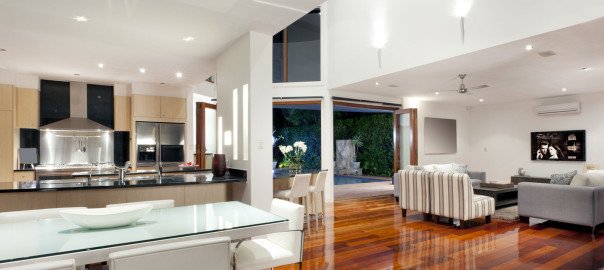
Lighting is décor’s latest superhero, capable of changing mood, affecting health, and improving productivity. Tunable white lighting is causing a revolution in the design world. It mimics natural patterns, adjusting its hue and brightness throughout the day so that visual comfort is always at its best. It’s become a preferred option for home lighting designers, but it’s equally useful for lighting architectural details.
How it Works
Standard LEDs arrive at their hue by mixing red, green, and blue. Tunable white lighting instead blends color temperature and light output to produce a range of different white lights. Basic tunable products use cross-dimming to blend warm and cool light, placing LED stripes next to one another and fitting a diffuser. More advanced options use multiple small LED chips to mix color, which means you can get away with smaller fittings. This is wonderful for layering task and ambient lighting.
Color and Channels
Not all tunable white LEDs are efficient enough to affect your health. Fewer channels cost less, but render color inaccurately. Five-channel versions deliver hue much more precisely, but you need advanced controls to obtain real benefits.
Dimming to Your Liking
Manual controls are typically operated with a wall panel, which requires you to change your hue to your taste throughout the day. Others dim via a filament source so that light output is muted while hue is changed. This way, your brightness range can be as subtle as you want it to be. Alternatively, sophisticated programmed controls designed to change your circadian rhythms operate themselves.
Today’s lighting world is no longer concerned with style and practicality alone. LEDs can dial up the moods of shoppers, keep workers more comfortable and alert, and affect residents’ sleep patterns. If you are designing for your home, Premier Lighting provides state-of-the-art lighting fixtures, style, and installation.

